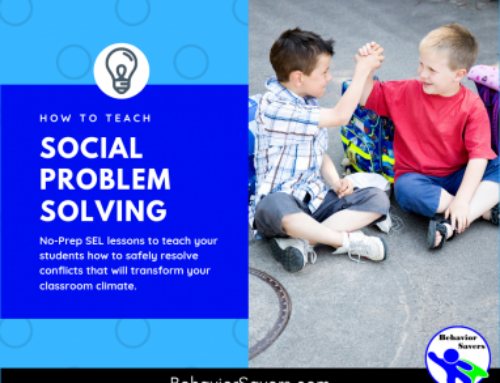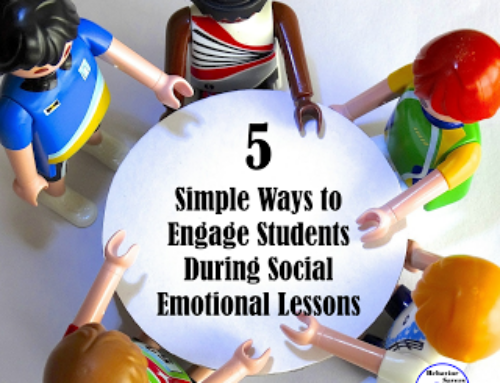
Hiedi France, Ed.D., is a school psychologist and author who has devoted her career to helping children succeed. She is also the founder of Behavior Savers which makes easy to use social emotional resources for educators, therapists, and parents.
Teaching Social Skills in the classroom can be challenging. This series helps educators to not just talk about social skills but TEACH them. We will cover the important things to cover and the materials you can use to accomplish the lessons. We promise…easy to use and easy to teach!
Handling Disappointment:
Disappointment is hard. Who likes to be expecting something to happen and then it doesn’t. I sure don’t. For many of my students this is one of the hardest social-emotional skills for them to learn. To be fair, my students who struggle with disappointment often have had a lot of experience with disappointment. It has not made them better at handling it. It often only compounds each instance into a bigger and bigger emotion. How can you teach your students to handle disappointment?
5 Ways to Teach Your Students How to Handle Disappointment:
- Feeling Identification. Teach your student how to identify the feeling. They can do this by naming the feeling or pointing to a feelings chart. Many young students will say they are angry. You may need to help them process why they are angry and help them to identify they are actually feeling disappointed.
- Feeling Vocabulary. Students who have a large feeling vocabulary can often express their feelings better. Students who have learning or behavior difficulty need explicit teaching of feeling words. The first feelings that students learn to identify is happy, sad, mad, and scared. These are a great start. However, students may need instruction to identify that mad can also be disappointed, frustrated, irritated, grouchy, etc.
- Positive Statements. The best strategy for disappointment is positive statements. Helping your students to be able to turn a disappointing event into something positive is a social-emotional skill that can last a lifetime. For example, if your student was not first in line and is disappointed they can say, “Maybe next time.” This helps them to realize that their disappointment is not forever. That they can get a chance later.
- Model. For some students you need to model for them on how to handle disappointment. A lot of times we do not show our disappointment to our students. It can helpful for students to know that disappointment happens to everyone. It is okay to feel disappointed and they can handle it in a positive way. For example, let’s say you wanted to show a movie and the internet is not working. Here’s the steps:
- State the problem. “Oh no the internet is out. I wanted to show a movie. I am disappointed.”
- State the options. “We could either watch it later and move on to math or watch this different one on DVD now.”
- Pick the best solution. “Ok let’s watch this one instead.”
This helps your students to know that sometimes we have to problem solve when things don’t go the way we wanted them to. It is okay. We can handle it by thinking about the positive options or statements.
- Practice. Students who don’t handle disappointment well don’t necessarily need more disappointing situations. However, they can use help to think about how they would handle situations that are disappointing. This helps them to think about what they could do when they encounter it. You can do this by either pointing out when disappointing situations happen in reading passages or with peers. You can then talk about how they should handle the disappointment. This type of practice builds a repertoire of options that become easier to replicate.







